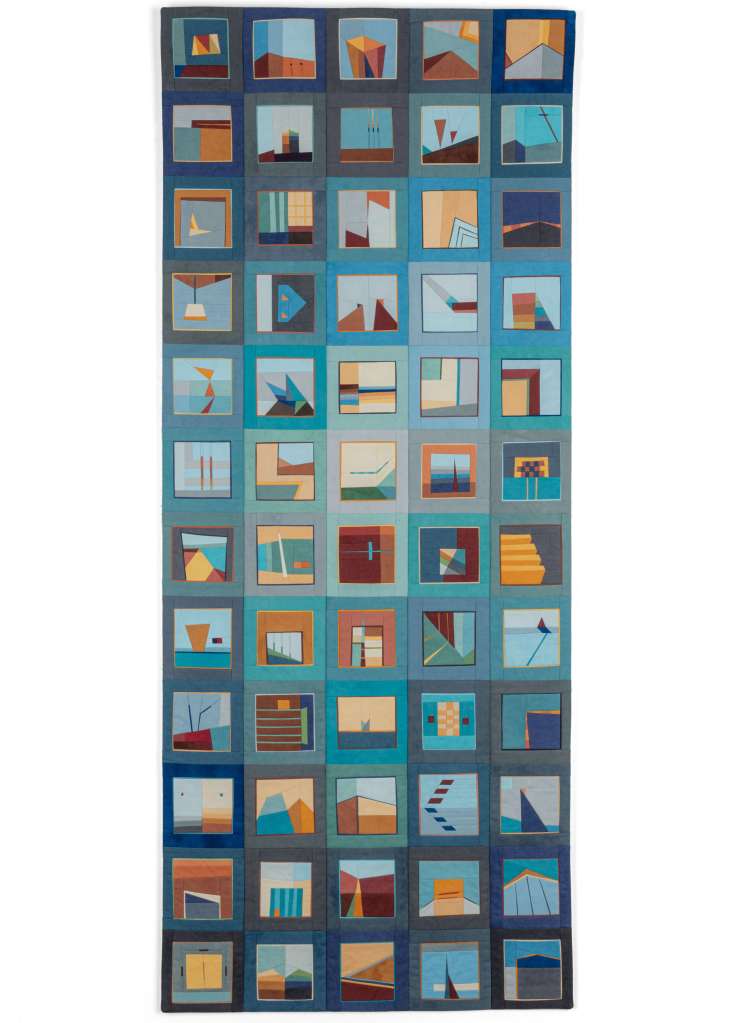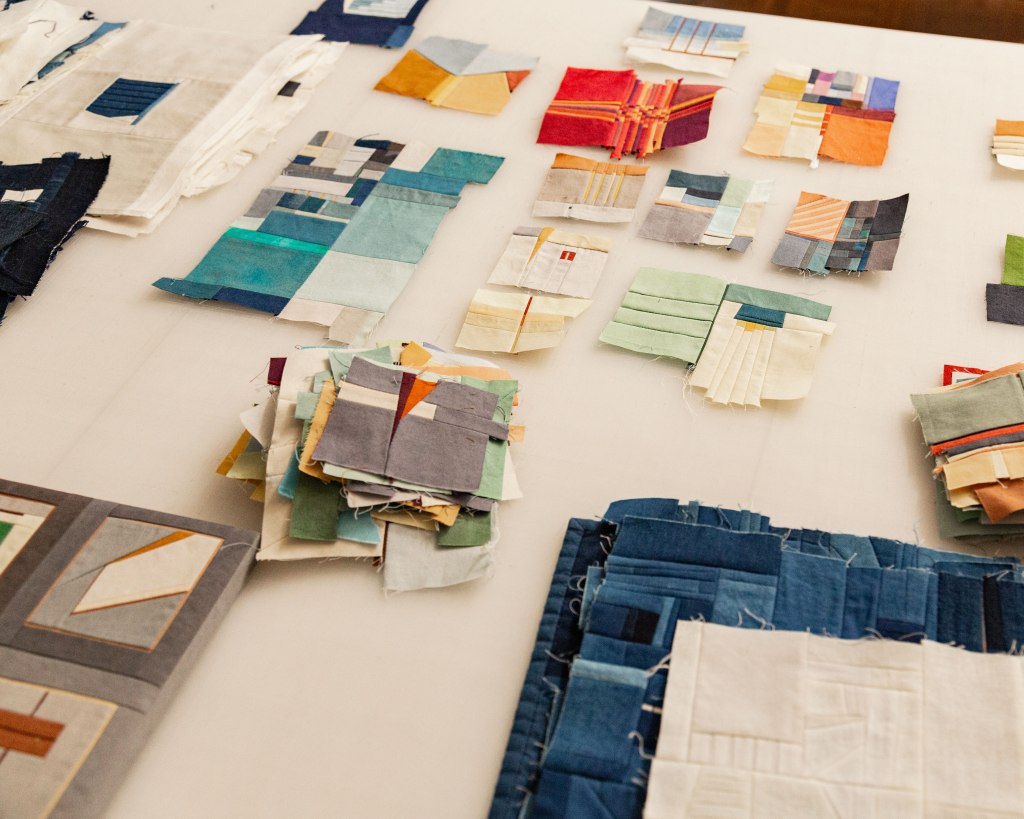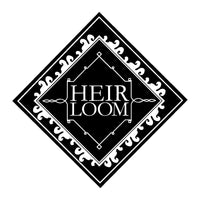

How did your journey into textiles begin? What drew you initially to quilting?
I was born into a family of makers. My mother has always done all things fiber. She taught me to sew and together we learned about dyeing. Quilts were the perfect fit for my love of color, sewing, and geometric design.
What part of textile/quilting history interests you the most? Are there any textile artists that you are influenced by?
I am interested in the fact that joining cloth together is an ancient technology that continues to be relevant. Maybe some element of how I’m working with patchwork is inventive, but the process is basic. It’s meaningful to work in a way that could be understood throughout time.

Tell us about your process, start to finish how you make your pieces.
Color is first. I gather a palette, pile those fabrics on the ironing board next to my sewing machine, sit down and start sewing. Most of my work is grid based and I make the blocks one at a time. Drawings help me sort out composition and order of assembly, but it’s mostly improvisation. Once the blocks are complete, they get arranged, sewn together, and finished, either in traditional quilt-style with batting and backing, or stretched over wood blocks, or sometimes stitched to paper.

Do you have a preconceived idea for your pieces or do you let materials guide you?
It depends. With the Color Stories and Shape Studies, there’s a set framework, but the imagery in each block is not planned.
The assemblies are more of a collage-like process. They’re made with the trimmings from other pieces and the job is to discover how to put everything together.
Where/what do you look to for inspiration? Has this changed over time or stayed constant?
I look at everything from my immediate surroundings – the fabrics in front of me, stacks of dishes – to views out the window, buildings, photographs, shadows…. really anything that makes an interesting shape or combination of colors. It’s not so much an intentional gathering of ideas; I see the world in details and it comes through in the work. My early pieces were much more abstract and “quilty.” The more I practiced, the more my skills developed and allowed me to sew intricate imagery, which has led to more specific, representational pieces. It was not my goal to make architectural quilts, but they’ve evolved. The shapes in the built environment lend themselves to patchwork, and I find satisfaction in the straight lines and angles.

How does hand dyeing your fabrics play a role in your work? Do you typically use natural dyes?
Hand-dyeing, making the color palette, is the core of my work. It’s intuitive, I do not keep recipes. I use fiber reactive dyes and indigo.
Tell us about the soft goods that you create for interior designers? How did that come about?
Years ago, I had a dance friend whose day job was at an interior design firm. They needed a quilt for a project, she introduced me, and 20 years later we still work together. This is custom sewing, mostly decorative pillows and occasionally quilts to be used as wallcoverings and upholstery. I love these projects – they’re technically challenging, a totally different style than my own, and the people are wonderful.

Does your background in dance influence your textile work? How did one thing lead to the other?
I was sewing since age 3 and dancing since age 6. It’s hard to say precisely how dance influences my textile work. The discipline and repetition of a dancer’s life, sense of space, rhythm – that sort of thing – surely translate. As a dancer, I interpreted other peoples’ choreography, but found my own clear voice in quiltmaking. I feel the contrast between performance and making tangible goods, being onstage vs the solitude of sewing. Dance and quilts are chapters of a larger creative life.

How do you imagine your work evolving in the future? Do you have any upcoming shows or events you are excited about?
Recent projects include indigo quilts for private clients and a capsule collection with Zara Man. My desire is to continue working with my hands, as a quiltmaker.
Do you believe the pandemic has had an impact on your work?
I stepped away from my usual style and craft show exhibition schedule. And I know I’m not the only one who turned to the scrap pile last year. What can I make with all this material on the shelves? I went back to basics. I made log cabin quilts. Lockerhook rugs. A pair of pants out of old Ikea curtains with a pill bottle cap button. The pandemic piggybacked on an already intense time of life change. In many ways it was fallow, and any sewing I managed was with a gentle nudging of just make something, erin. Didn’t feel like much. But now, looking back, I have a collection of personal work, seeds for new directions. I’m finding a little more peace in the process.


